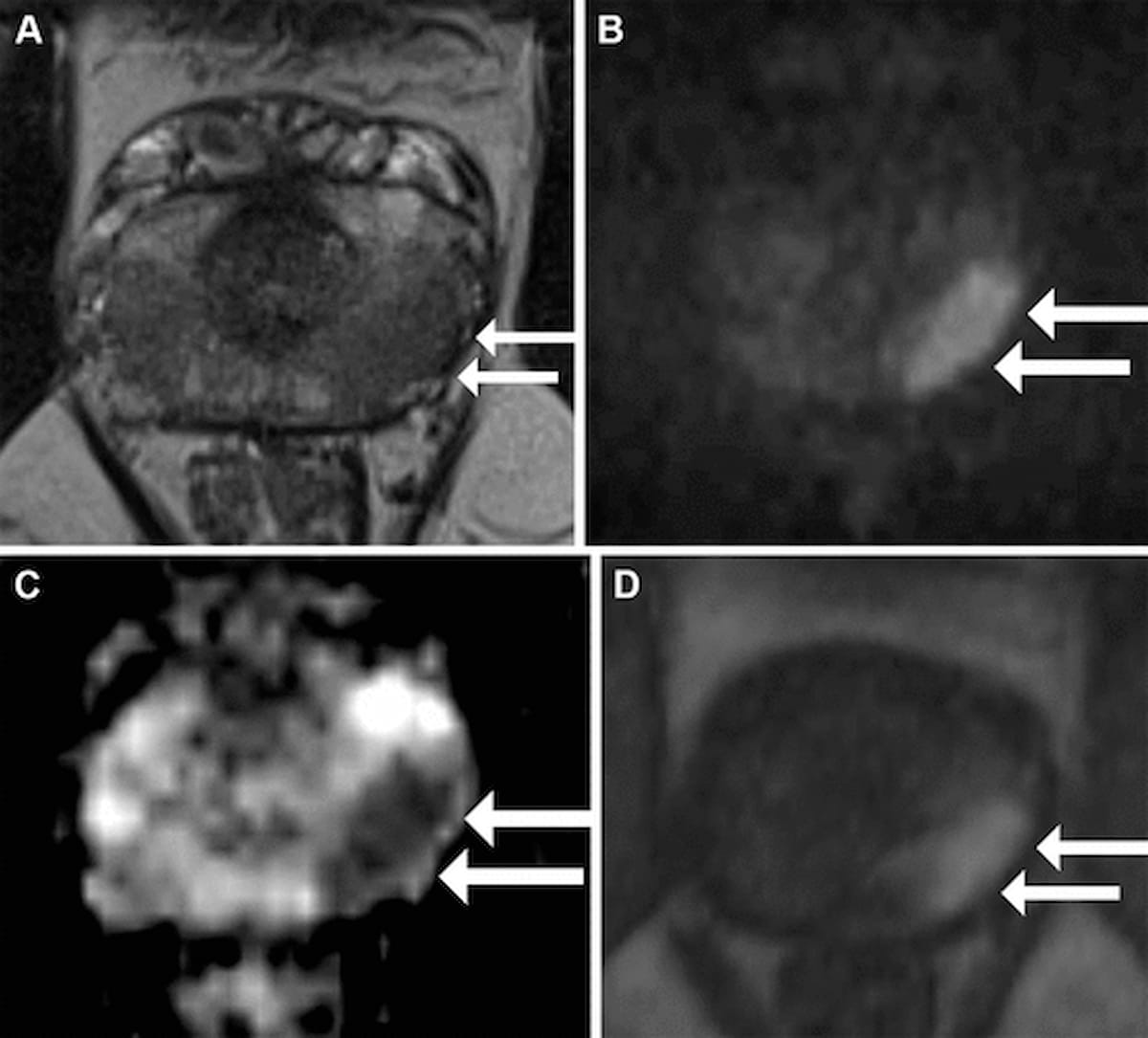Emerging research demonstrates that multiparametric MRI (mpMRI)-targeted biopsies are more effective than systematic biopsies at identifying intraductal carcinoma (IDC) and invasive cribriform (Cr) subtypes of prostate cancer.
For the retrospective study, recently published in Radiology, researchers compared findings from 196 systematic biopsies vs. results from 132 mpMRI-targeted biopsies for the detection of Cr/IDC patterns. Multiparametric MRI-directed biopsies were utilized for study participants with PI-RADS 3 and higher scores, according to the study authors.
The researchers found that mpMRI-targeted biopsies diagnosed Cr/IDC patterns in 25 percent of the cohort in comparison to 16 percent for participants in the systematic biopsy group.
“Our secondary analysis of a phase 3 randomized controlled trial demonstrated that cribriform (Cr)/intraductal carcinoma (IDC) pattern prostate cancer (PCa) is more likely to be detected at multiparametric MRI–targeted biopsy compared with systematic biopsy,” wrote lead study author Sangeet Ghai, M.D., who is affiliated with the Joint Department of Medical Imaging at the University Health Network-Mount Sinai Hospital-Women’s College Hospital at the University of Toronto in Toronto, Canada.
Emphasizing the aggressive nature of the Cr/IDC subtypes and association with biochemical recurrence of prostate cancer (PCa) and distant metastasis, the study authors noted that updated recommendation for Gleason grading of PCa advocate reporting of these subtypes.
“Detection of Cr/IDC patterns at biopsy is … an exclusion criterion for active surveillance and minimally invasive focal therapy treatments. Additionally, detection of Cr/IDC presence at prostate biopsy strengthens pretreatment risk stratification using Cancer of Prostate Risk Assessment and National Cancer Comprehensive Network tools,” noted Ghai and colleagues.
(Editor’s note: For additional content on prostate cancer imaging, click here.)
For study participants with mpMRI-targeted biopsies, the study authors saw no statistically significant differences in apparent diffusion coefficient, dynamically contrast-enhanced positivity, and mean cancer core lengths (CCLs) between those with clinically significant PCa (csPCa) and those without csPCa.
Three Key Takeaways
1. Higher detection rates. Multiparametric MRI (mpMRI)-targeted biopsies are more effective at detecting cribriform (Cr) and intraductal carcinoma (IDC) patterns of prostate cancer compared to systematic biopsies, identifying these patterns in 25 percent of the cohort versus 16 percent with systematic biopsies.
2. Aggressiveness and recurrence. Cr/IDC subtypes of prostate cancer are aggressive and associated with higher rates of biochemical recurrence and distant metastasis. These subtypes are now recommended for reporting in updated Gleason grading of prostate cancer.
3. Impact on treatment decisions. The study authors noted that detection of Cr/IDC patterns at biopsy is an exclusion criterion for active surveillance and minimally invasive focal therapy. It also aids in strengthening pre-treatment risk stratification using Cancer of Prostate Risk Assessment and National Cancer Comprehensive Network tools.
However, the researchers also noted the overall finding that positive Cr/IDC findings were associated with a higher mean CCL (11.1 mm) in contrast to the CCL (9.2 mm) for participants with csPCa and negative findings for Cr/IDC.
“(This is) consistent with other reports associating Cr/IDC patterns with larger-volume disease. Tumor size significantly impacts tumor visibility at MRI and may therefore account for detection of Cr/IDC patterns at MRI,” pointed out Ghai and colleagues.
The study authors added that cr/IDC patterns were significantly more pronounced in PI-RADS 5 (50 percent) and PI-RADS 4 lesions (28 percent) in comparison to PI-RADS 3 cases (5 percent).
(Editor’s note: For related content, see “Are Prostate Biopsies Necessary in Patients with Negative or Equivocal MRIs and Low PSA Density?,” “Study: PET/MRI May Prevent Up to 83 Percent of Unnecessary Biopsies in Men with PI-RADS 3 Lesions” and “Emerging Predictive Model with mpMRI Findings May Reduce Up to 43 Percent of Unnecessary Systematic Prostate Biopsies.”)
In regard to study limitations, the authors suggested the possibilities of interreader variability with Cr/IDC pattern incidence due to a lack of central review of pathology slides and interpretation bias due to fewer targeted-only cores in the mpMRI cohort.
